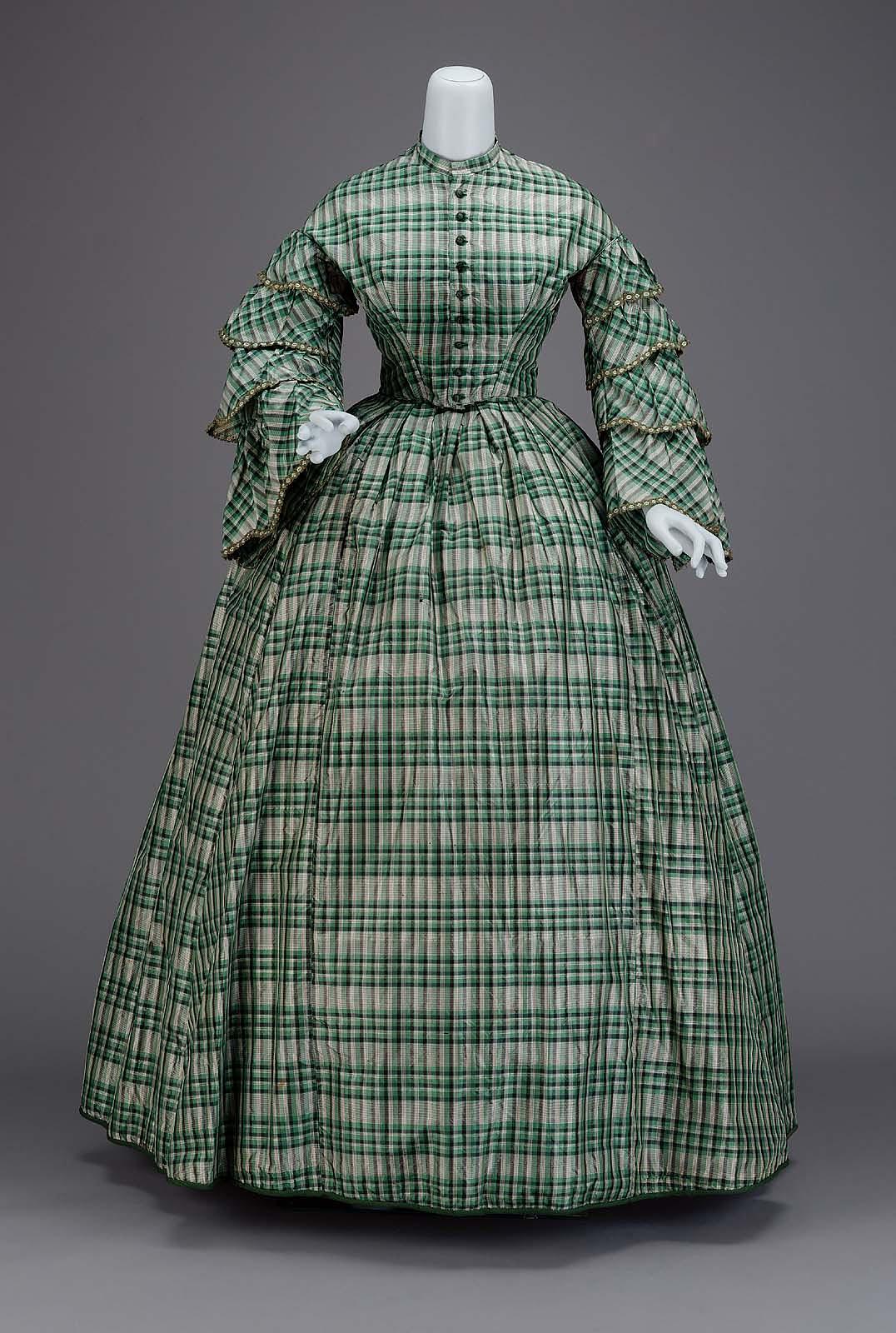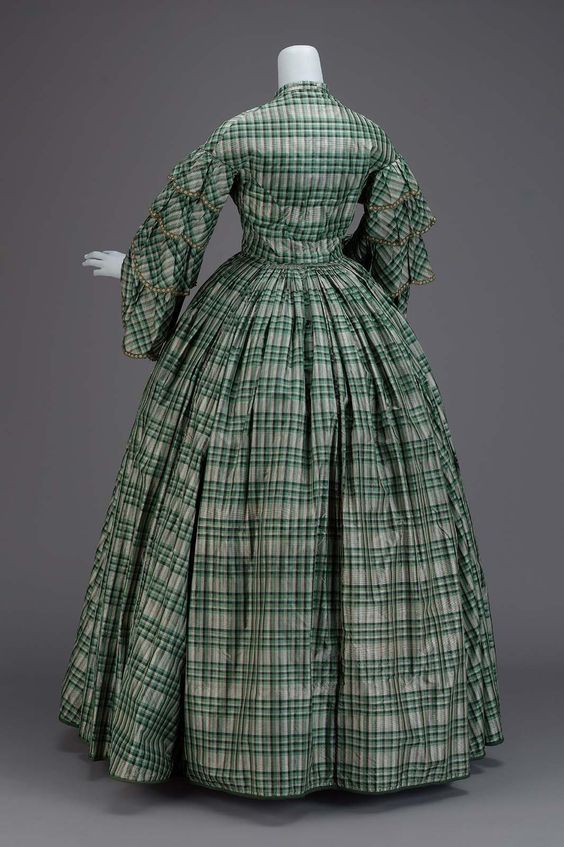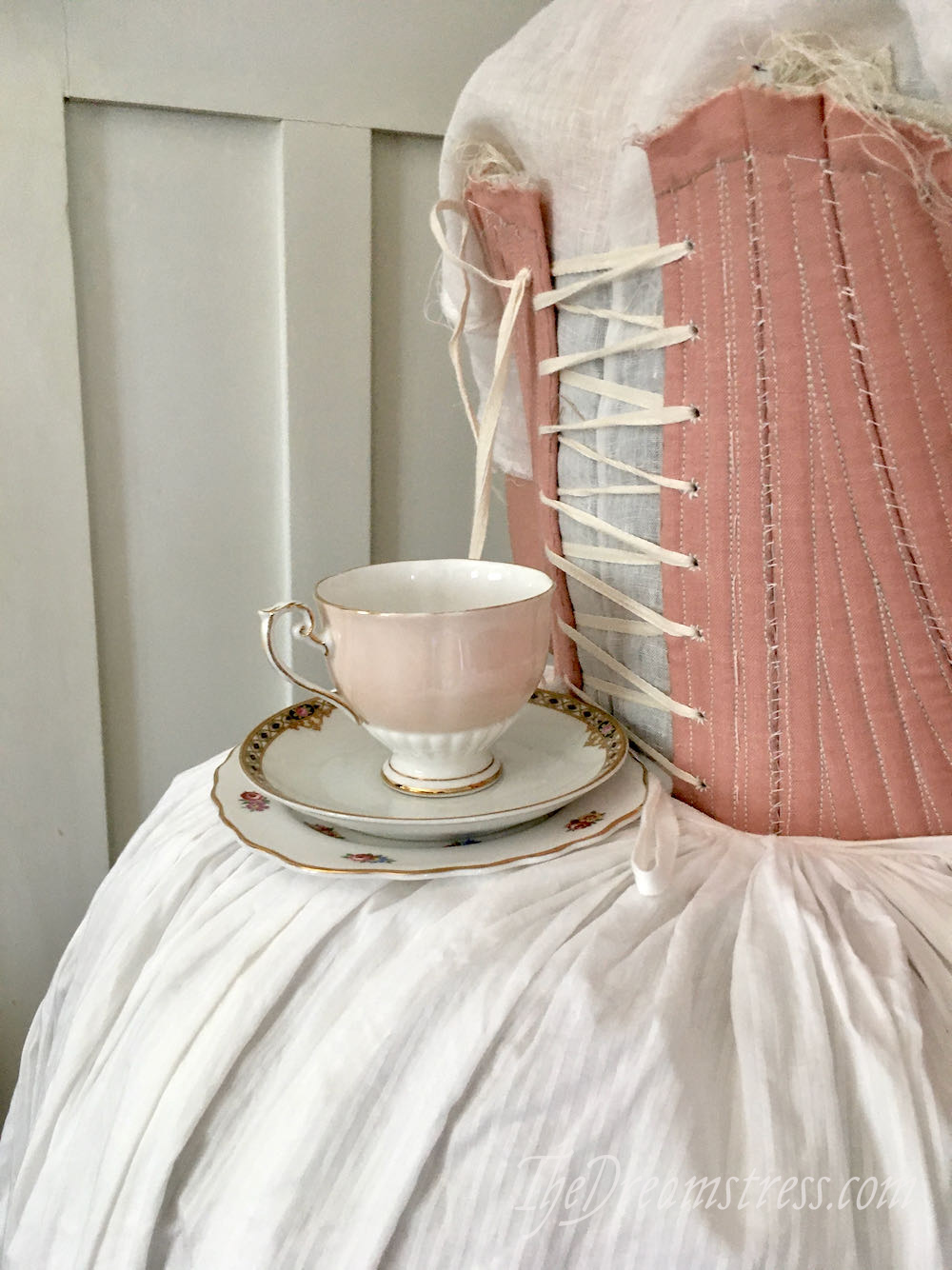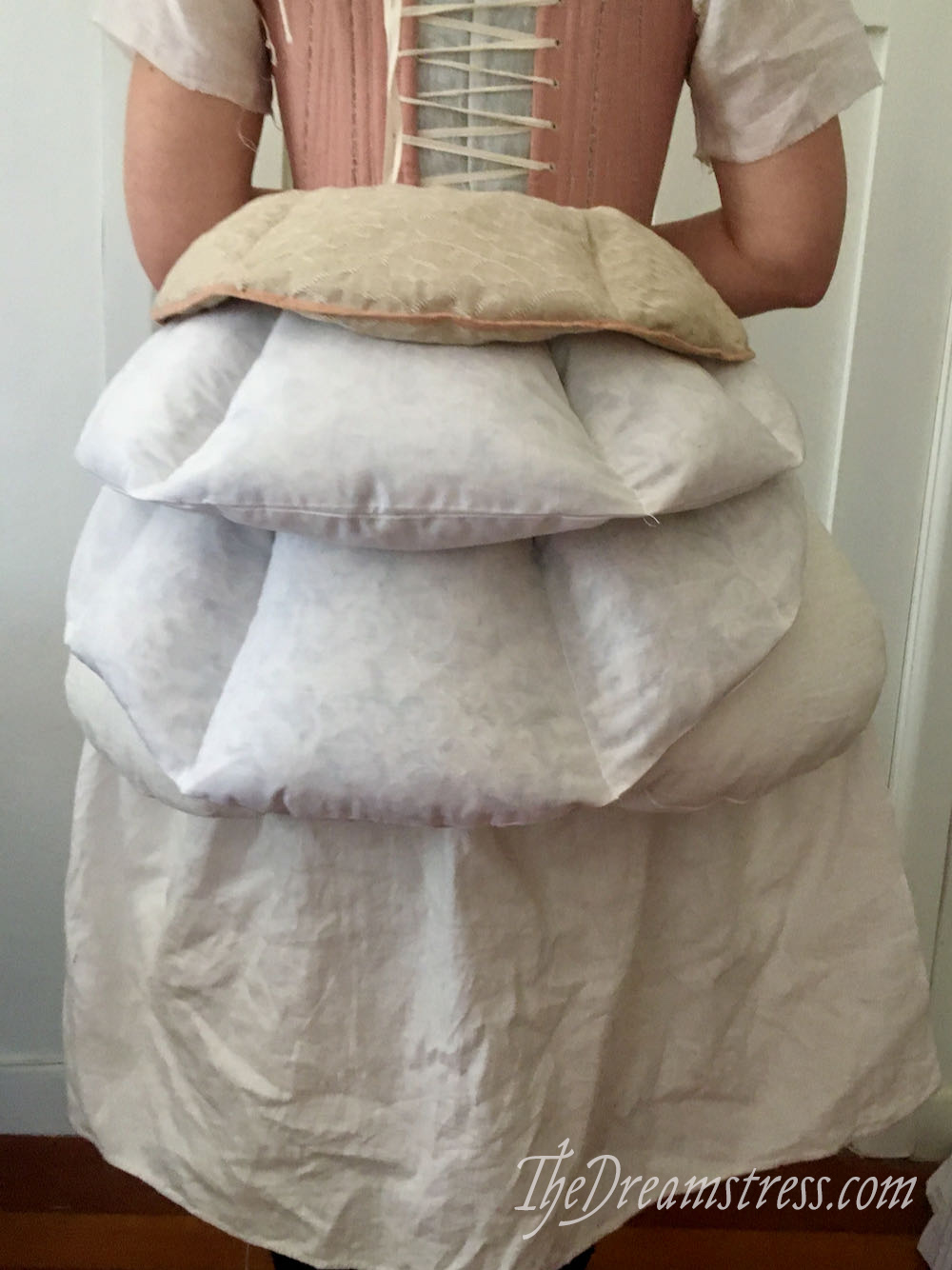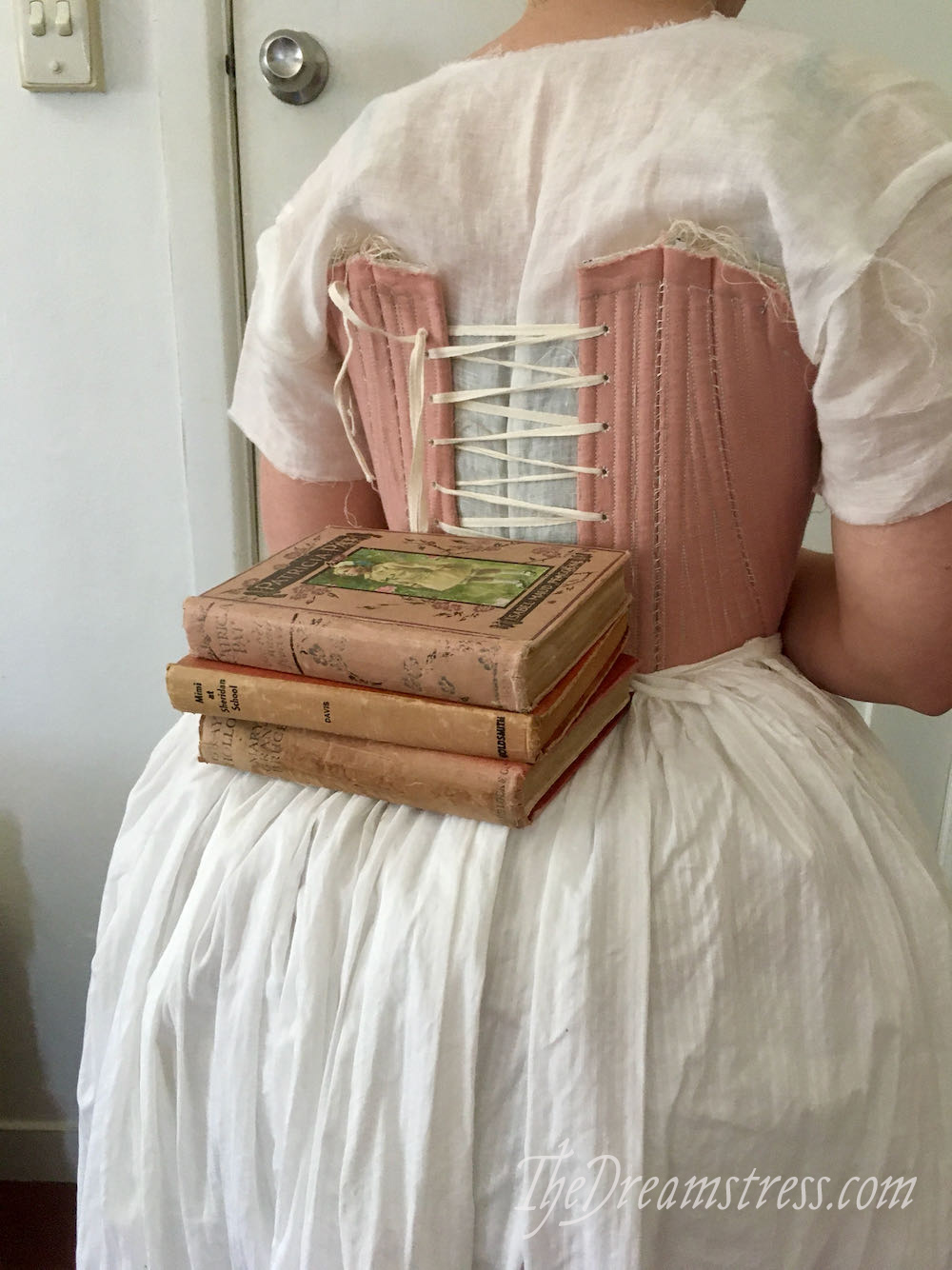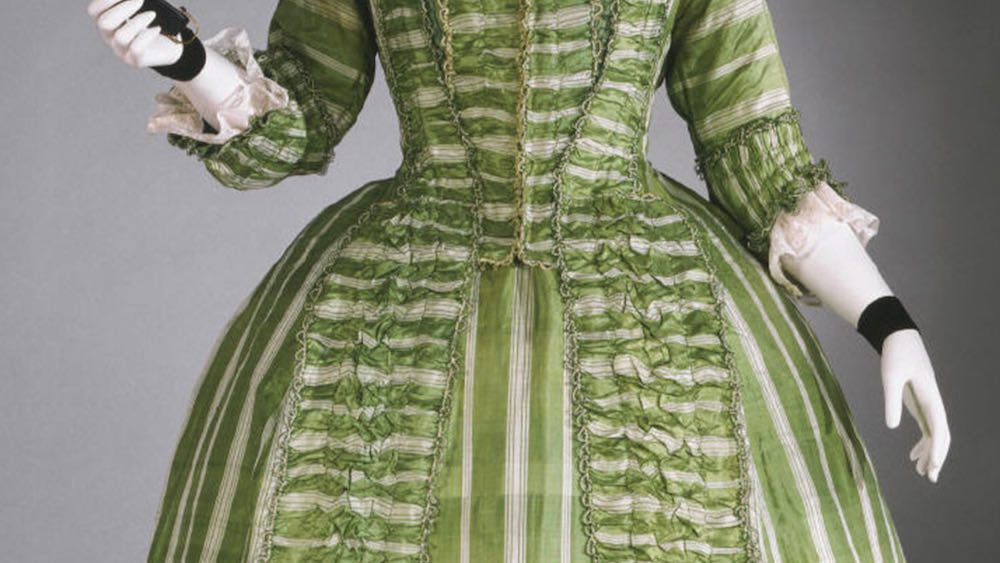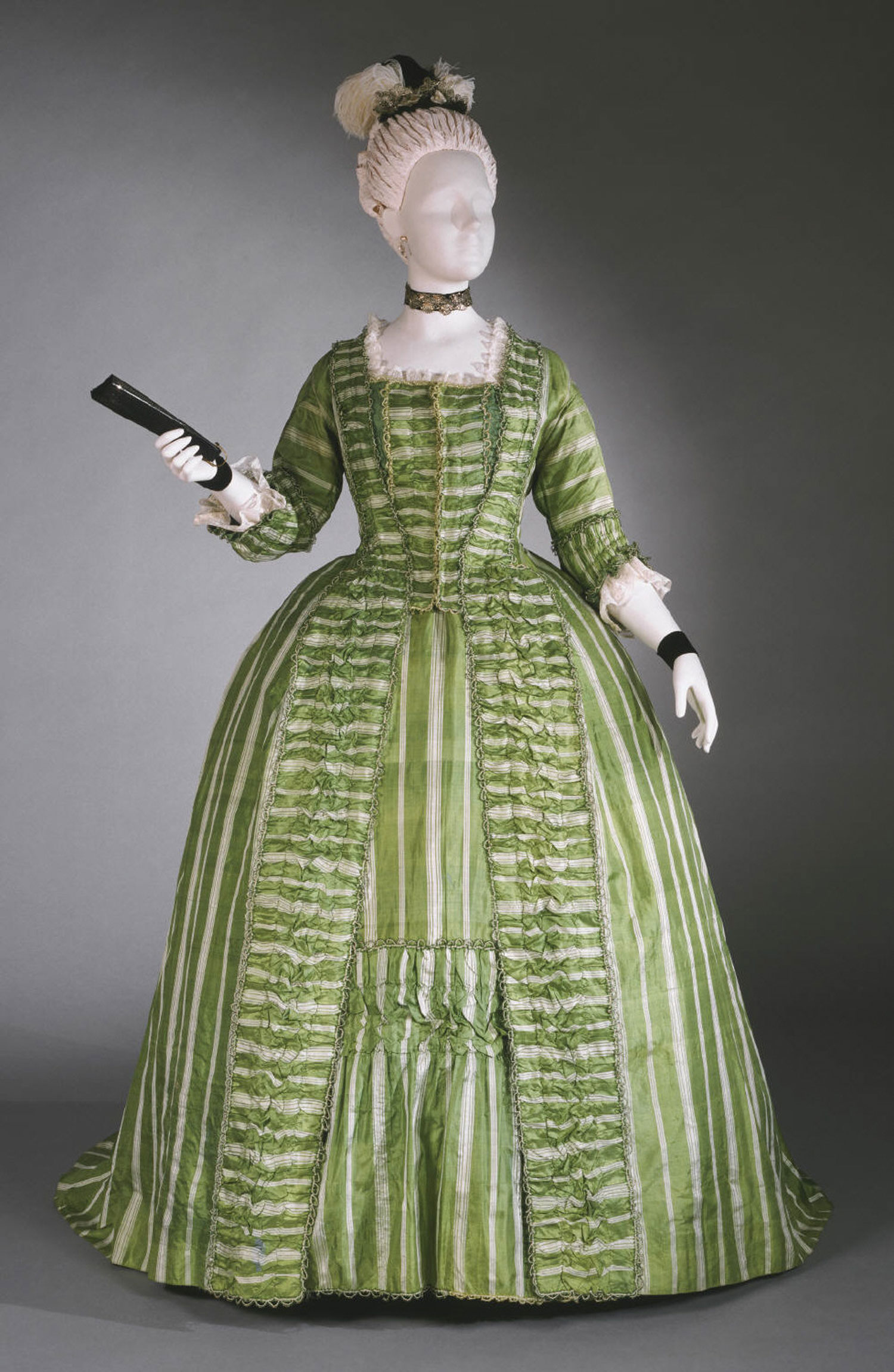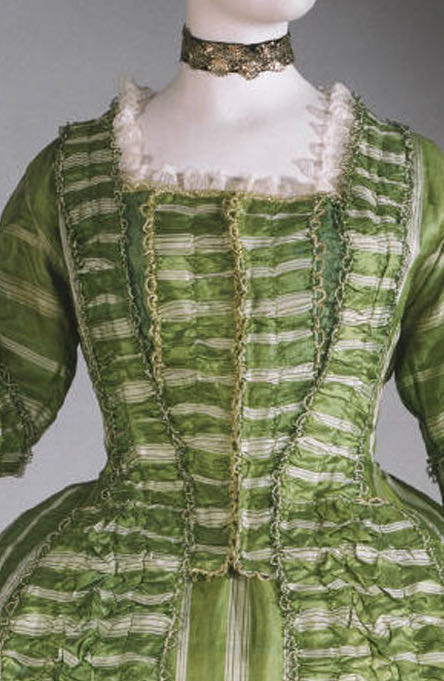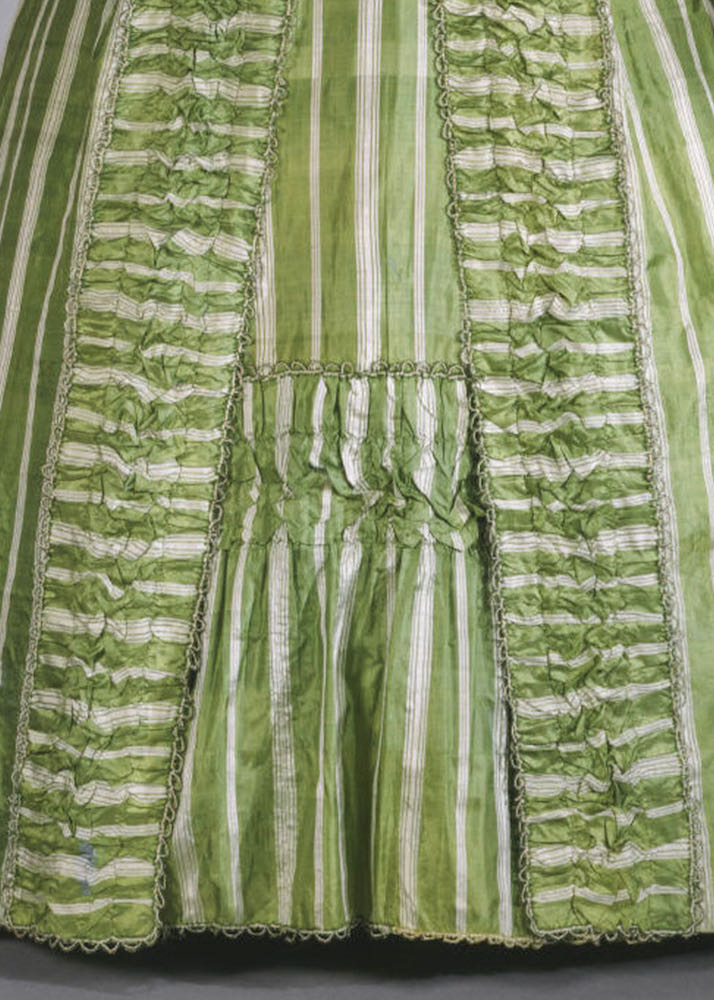This week on Rate the Dress we’re looking at a ca. 1860 plaid day dress. Just like last week’s 1780s francaise it combines a very classic silhouette of its era with a few interesting design elements.
Last Week: a 1770-80 française in green striped silk
Oooh, you did like last week’s dress… The lowest rating was an 8, and the only complaints people had was that the stripes were a little cucumber-y.
In an amazing bit of synchronisity to the melon comments, a friend just learned about the Hawai’ian ae-ae banana, and sent me a photo of a stalk in just these colours.
The Total: 9.8 out of 10
That is really almost perfect!
This week: a ca. 1860 dress in stripey plaid
This day dress is an excellent example of its time. It shows fashion just moving from the round crinoline of the 1850s into the elliptical hoop silhouette that would dominate the 1860s.
It’s a dress in two parts, with a seperate bodice and skirt. The bodice features front buttons, a small standing collar, dropped shoulders framed with narrow piping, and wide sleeves featuring four rows of ruffled tiers with very shallow scalloped edges.
There’s the tiniest suggestion of the dipped V bodice of the 1850 at the waist, but a sash or belt would give the completely straight waist of the 1860s.
The plaid pattern, with its heavy diagonal stripe, makes the shape of the pattern pieces extremely clear: you can see the angles of the skirt gores, the dropped shoulders, and the double darts of the bodice.
The dress would have been worn with a collar, and engageantes (under sleeves).
What do you think? Is this a good example of ca. 1860? Nicely decorative without veering into frilly silliness?
Rate the Dress on a Scale of 1 to 10
A reminder about rating — feel free to be critical if you don’t like a thing, but make sure that your comments aren’t actually insulting to those who do like a garment. Phrase criticism as your opinion, rather than a flat fact. Our different tastes are what make Rate the Dress so interesting. It’s no fun when a comment implies that anyone who doesn’t agree with it, or who would wear a garment, is totally lacking in taste.
As usual, nothing more complicated than a .5. I also hugely appreciate it if you only do one rating, and set it on a line at the very end of your comment.


